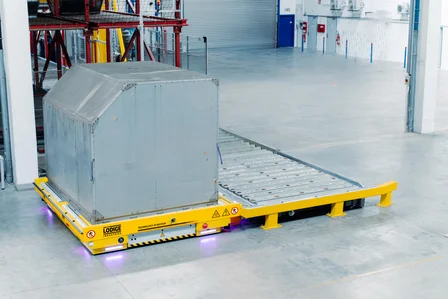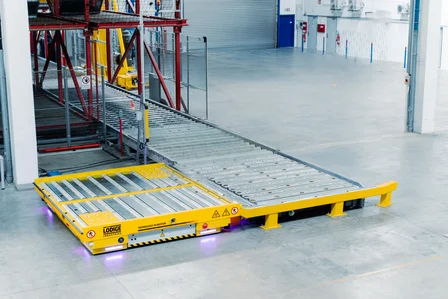From Manual to Automated: A Deep Dive into AGVs in Air Cargo
How AGV's are revolutionising the Air Freight Handling
With the air cargo industry under pressure to adapt to soaring demands, traditional manual handling methods are quickly becoming obsolete. Enter Automated Guided Vehicles (AGVs) — a groundbreaking innovation poised to transform the industry. These autonomous machines streamline cargo movement, reduce human error, and enhance safety while operating around the clock. As AGVs take center stage, they not only promise to increase operational efficiency but also signal a shift towards a fully automated future in air cargo logistics, ready to meet the challenges of a dynamic global market.
Rising demands for faster logistics
In the world of air cargo, the demand for faster, more efficient logistics has never been greater. The rapid growth of e-commerce, increased global trade, and the need for quicker turnaround times have all put immense pressure on cargo operations. Traditionally, air cargo handling has relied heavily on manual processes, with workers using forklifts, roller conyeors, and other machinery to move goods between planes and warehouses. However, the introduction of automated guided vehicles (AGVs) is transforming this landscape, shifting air cargo operations from manual to automated systems.

The challenges of manual cargo handling
For decades, manual cargo handling has played a significant role in the air cargo industry, but at Lödige Industries, we’ve been pioneering automation solutions for over 75 years. While automation has long been part of our approach, the rising cargo volumes and growing operational demands are making it clear that fully relying on manual processes is no longer sustainable. Some key pain points include:
Labor Intensity
Moving heavy cargo, loading and unloading pallets, and transporting goods between planes and storage areas require significant manpower. This not only leads to higher labor costs but also results in fatigue and slower processing times during peak hours.
Human Error
Manual handling is prone to mistakes, such as mislabeling, incorrect loading, or damaging fragile cargo. These errors can lead to costly delays and disrupt the entire supply chain.
Inefficiency
Cargo terminals must operate around the clock to keep up with global trade, but manual processes often create bottlenecks, especially during shift changes or when labor shortages occur.
How AGVs are changing the game
AGVs are autonomous machines designed to handle cargo transportation tasks without the need of human intervention. In air cargo, they perform a range of duties, from moving cargo in warehouses to loading and unloading containers onto transport vehicles. These vehicles are equipped with advanced navigation systems, sensors, and AI technologies that allow them to operate efficiently in busy and complex environments. Some of the ways AGVs are changing the air cargo industry include:


The future of AGVs in Air Cargo
As AGV technology continues to evolve, we can expect even more advanced systems that are capable of handling larger volumes of cargo, adapting to real-time changes, and integrating with other automated systems, such as warehouse management software and cargo tracking solutions. In the coming years, fully automated air cargo terminals may become the industry standard, with AGVs playing a central role in optimizing operations, reducing costs, and improving the speed and reliability of global trade. The transition from manual to automated cargo handling is reshaping the future of air cargo. As the industry continues to embrace automation, AGVs will become indispensable tools for logistics providers looking to stay competitive in an increasingly fast-paced world.



